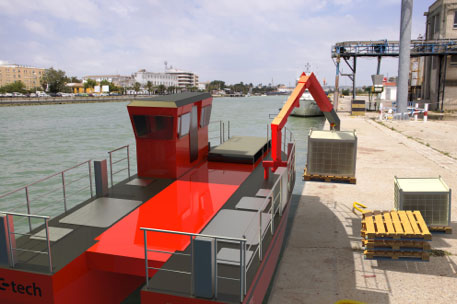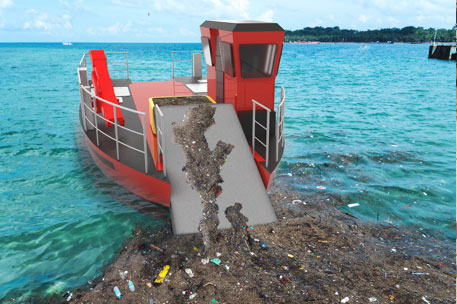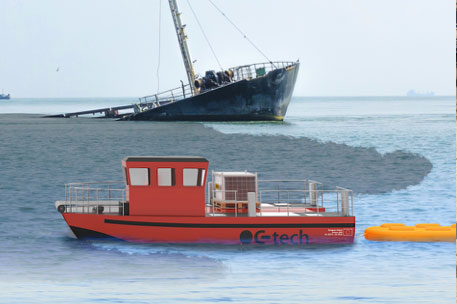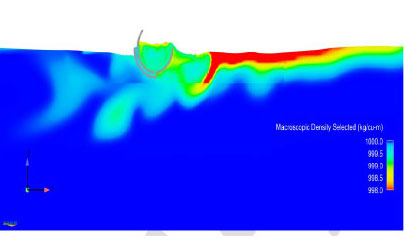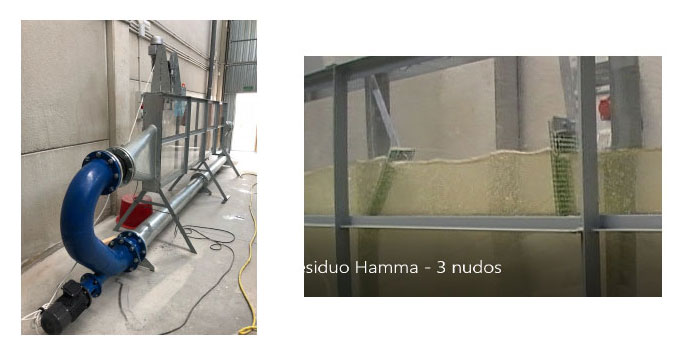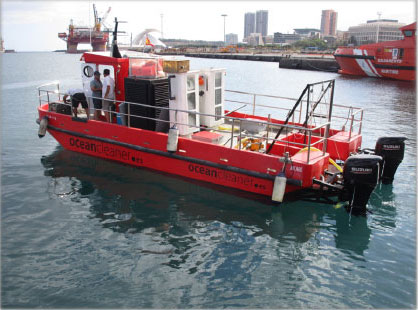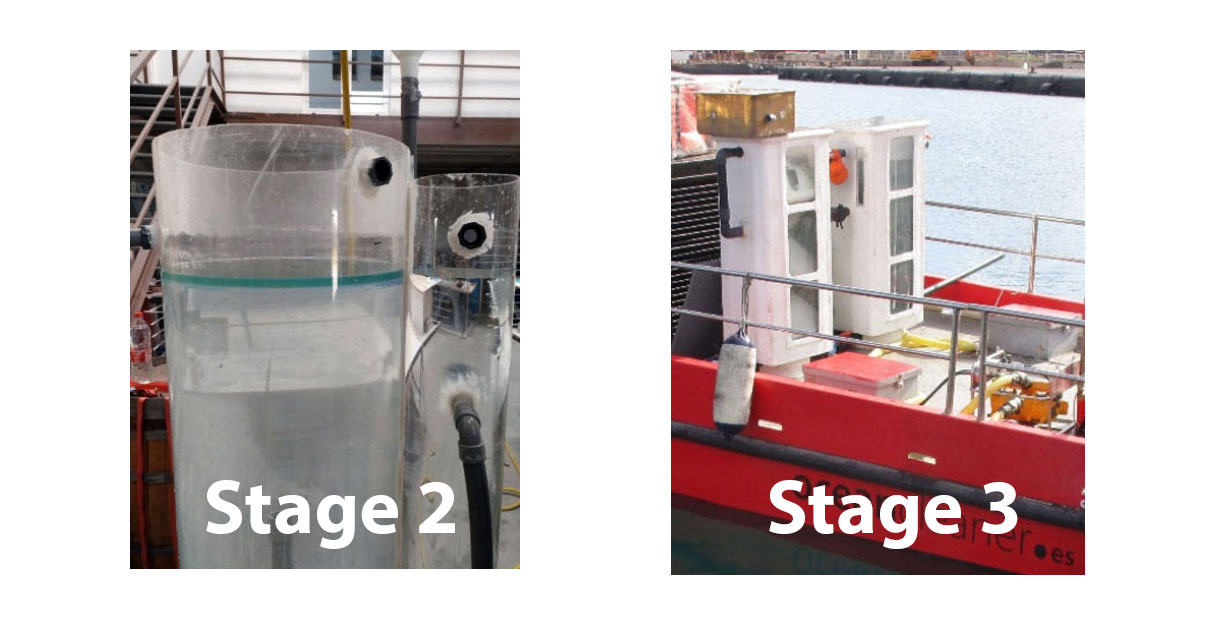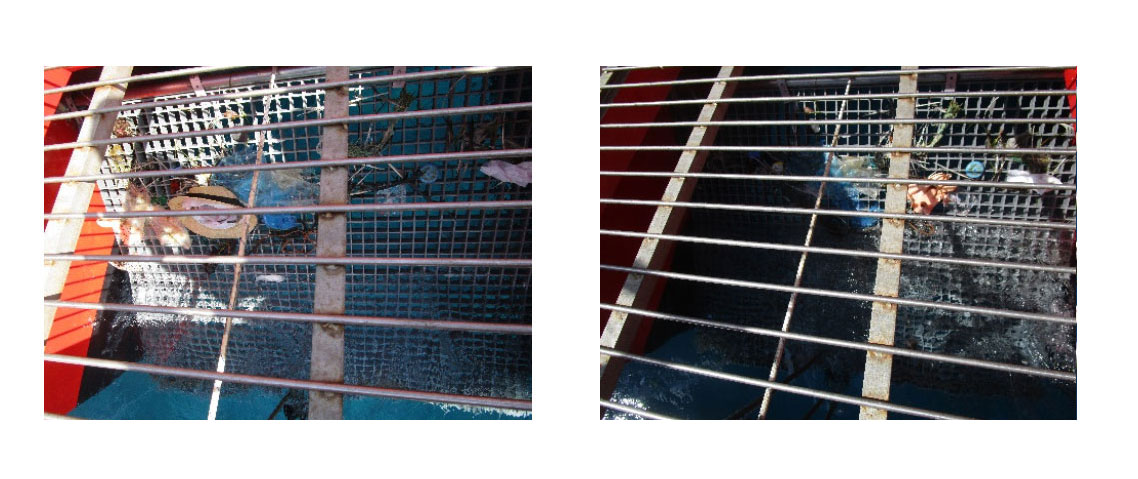H2020 - Phase 2
Partial Objectives1.Building a competitive and modern multi-task OC-Tech HORIZON vessel in aluminium
Objective: Designing a competitive multi-task vessel, incorporating unique elements and equipment valued by customers:
2.Developing the innovative patented OC-Tech systems for the cleaning and treatment of pollutants and marine litter
Objective: Investigating, analysing and developing OC-Tech’s innovative patented cleaning, storage and treatment systems for liquid and solid floating waste, confirming their performance and integrating them into the OC-Tech vessel itself.
Waste collection system
Innovative collection system targeting floating pollutants and spills, without using any chemicals or flocculating agents so as to avoid further polluting the sea.
R&D methodology: Research used to develop the waste collection system
Stage 1: CFD (Computational Fluid Dynamics) calculations
Stage 2: Construction of prototypes in an artificial water channel
Stage 3: Construction of real models
Stage 4: Full-scale assembly and tests on lab vessel
Waste concentrator system
The innovative continuous waste storage system, located on the deck of the catamaran, has an inlet where the polluted water goes in and an outlet that returns clean water into the sea, avoiding having to continually go back to the port to deliver the collected waste.
R&D methodology: Research used to develop the waste concentrator system.
Stage 1: Blueprint design
Stage 2: Construction of prototypes to perform trial and error tests
Stage 3: Construction of real models
Solid waste collection system
The OC-Tech boat picks up bulky solids separately, storing marine litter in other tanks separately from the floating liquid waste.
The OC-Tech vessel will have a floating solid waste collection system in the bow operating continuously and which will be responsible for picking up any floating packaging and bulky litter, and storing it in a solid waste tank located on the deck.
R&D methodology: Research used to develop the solid waste collection system.
Stage 1: Blueprint design
Stage 2: Integration of devices for testing in the lab vessel
Stage 3: Construction of real models
Integration of devices during real tests in a laboratory boat

